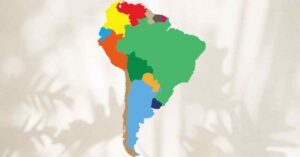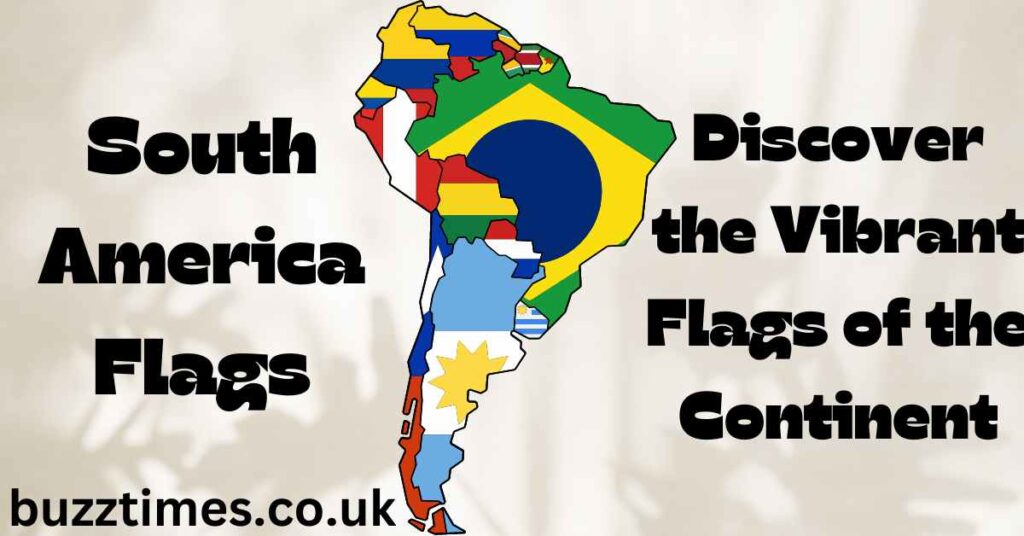Introduction
South America flags are as vibrant and diverse as the continent itself. Each flag represents a unique story, reflecting the rich culture and history of its nation. By exploring these flags, you can gain insight into the spirit of South America. Let’s dive into the world of South America flags and uncover the stories they tell.
South America: A Continent of Diversity
South America is known for its breathtaking landscapes, diverse cultures, and rich history. From the Amazon rainforest to the Andes mountains, the continent is a mosaic of environments. This diversity is reflected in the flags of its countries. Each flag has distinct colors, symbols, and meanings that reflect the country’s identity.
The Importance of Flags
Flags are more than just pieces of fabric. They’re a symbol of national pride and a representation of a nation’s history, culture, and values. In South America, flags often incorporate elements that signify a country’s struggle for independence, its geography, and its unique heritage.

Overview of South American Flags
Let’s explore some of the prominent flags of South America and uncover the stories they tell.
Brazil: The Green, Yellow, and Blue
Brazil’s flag is instantly recognizable. The green represents the lush forests, while the yellow symbolizes the country’s wealth in gold. The blue circle with stars represents the night sky over Rio de Janeiro on the day Brazil declared its independence. The banner across the blue circle reads “Ordem e Progresso” (Order and Progress), capturing the spirit of the nation.
Argentina: The Light Blue and White
Argentina’s flag has a simple yet elegant design. The light blue and white stripes represent the sky and clouds. The central sun with a face is called the Sun of May, symbolizing the Inca sun god Inti. This flag evokes a sense of freedom and the struggle for independence.
Colombia: A Splash of Colors
Colombia’s flag is bold and colorful. It has three horizontal stripes: yellow, blue, and red. The yellow stripe represents the country’s wealth, while the blue signifies the seas, and the red stands for the bloodshed during the struggle for independence. It’s a vibrant flag that speaks to Colombia’s history.
Venezuela: Eight Stars and Red Streaks
Venezuela’s flag is striking with its eight white stars arranged in a semicircle on the blue stripe. The yellow stripe represents wealth, the blue symbolizes the ocean, and the red signifies courage. The eight stars represent the original provinces that formed Venezuela.
Peru: The Crimson and White
Peru’s flag has a simple and striking design. The red represents the bloodshed during the struggle for independence, while the white stands for peace and purity. In the center of the flag is the national coat of arms, depicting a vicuña, a quinine tree, and a cornucopia filled with gold coins.
Chile: The Lone Star
Chile’s flag, known as La Estrella Solitaria, has a white star on a blue square, representing the sky and the ocean. The red stripe signifies the bloodshed during the fight for independence, and the white stripe represents the Andes mountains. This flag is a symbol of Chile’s rich history and natural beauty.
Ecuador: The Vibrant Yellow
Ecuador’s flag has a unique design with vibrant yellow, blue, and red stripes. The yellow represents the country’s abundance, the blue symbolizes the sea and sky, and the red stands for the bloodshed during the struggle for independence. The coat of arms in the center features an Andean condor and the Chimborazo volcano.
Bolivia: The Tricolor of Red, Yellow, and Green
Bolivia’s flag features three horizontal stripes: red, yellow, and green. The red represents the brave Bolivians who fought for independence, the yellow signifies the country’s resources, and the green symbolizes its rich nature. The national coat of arms, with an Andean condor and Mount Potosí, rests in the center.
Uruguay: Sun and Stripes
Uruguay’s flag, known as the Sun and Stripes, has nine alternating blue and white stripes, representing the original nine provinces. The flag also has a bright sun with a face, symbolizing the Sun of May, a key element in Uruguayan history and identity. This flag exudes a sense of freedom and unity.
Paraguay: Red, White, and Blue
Paraguay’s flag stands out with its red, white, and blue horizontal stripes. The red represents courage, the white stands for unity, and the blue symbolizes liberty. The unique aspect of this flag is its two-sided design. One side has the national coat of arms, while the other features the country’s treasury seal.
Conclusion
The flags of South America are more than just symbols; they’re a reflection of the continent’s rich history, culture, and diversity. Each flag tells a story, and when you see them flying high, you can’t help but feel a sense of pride and unity. These flags remind us of the struggles, the triumphs, and the enduring spirit of the people they represent.
Frequently Asked Questions
Q1: What does the Sun of May represent in South American flags? The Sun of May represents the Inca sun god Inti and is a symbol of freedom and independence. It’s featured prominently in the flags of Argentina and Uruguay.
Q2: Why do many South American flags use red, yellow, and blue? Red, yellow, and blue are common colors in South American flags because they represent courage, wealth, and the seas, respectively. These colors reflect the continent’s history and natural resources.
Q3: What is unique about Paraguay’s flag? Paraguay’s flag has a unique two-sided design. One side features the national coat of arms, while the other displays the country’s treasury seal. This design represents unity and strength.
Q4: Why does Chile’s flag have a single star? Chile’s flag has a single star, known as the Lone Star, symbolizing the country’s independence and unique identity. It also represents the sky and the ocean.
Q5: What does the green color in Brazil’s flag represent? The green in Brazil’s flag represents the lush forests and the country’s natural beauty. It reflects the rich biodiversity of Brazil’s landscape.

